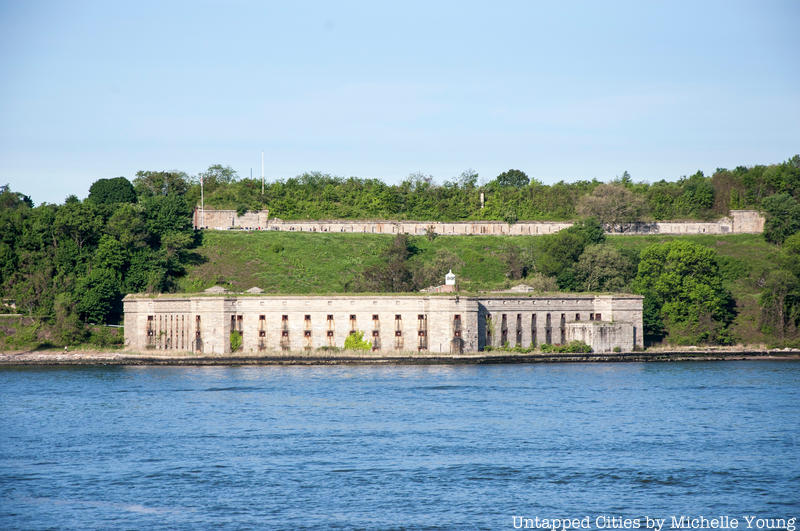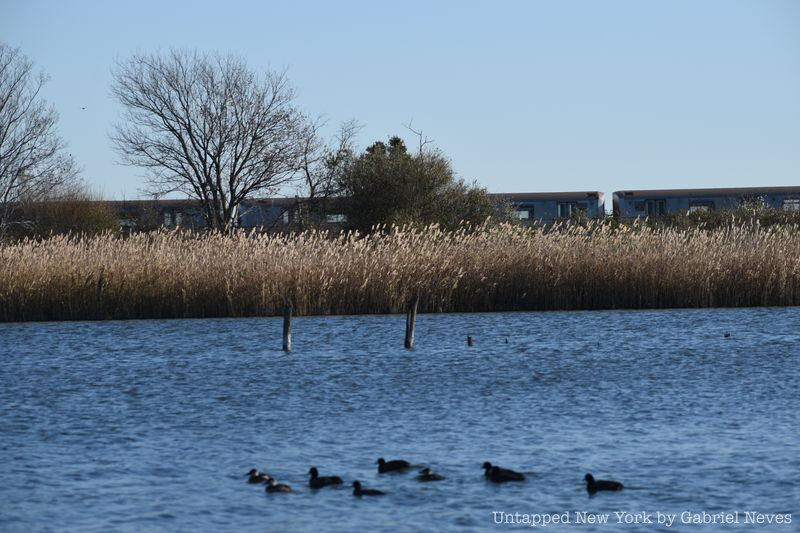
If you’re looking for places to explore in New York City that offer beautiful scenery and even a history lesson, consider visiting some sites in the Gateway National Recreation Area. Taking up more than 26,000 acres of land, the area is located mostly along the outer coastlines of Queens, Brooklyn, Staten Island, and northern New Jersey. It was established by the federal government in 1972 to provide city residents with the opportunity to engage in recreational activities that they otherwise wouldn’t be able to do in the city. In 2020, over 8.4 million people visited the Gateway National Recreation Area. Although beach-goers made up a large percentage of that number, others found exploring old military sites and nature preserves to be just as exciting as a day under the sun.
Much of the shoreline opening up from the mouth of New York Harbor was utilized by the U.S. Navy and Army as batteries or bunkers to protect New York from naval attacks. Although many of the installations saw little to no action during their time, the structures were preserved by the federal government for historical and educational purposes after 1974. These military sites, now overgrown, were constructed on coastal dunes and maritime forests that now serve as important nesting locations for migratory birds. A wide array of secluded beaches and thick vegetation make for a great getaway from the sometimes gray and congestive urban environment.
1. Jamaica Bay Wildlife Refuge

It can be argued that this location is the most important nature preserve in the Gateway National Recreation Area. Resting on some of the marshy islands located between mainland Queens and the Rockaway peninsula, the Jamaica Bay Wildlife Refuge is a great destination for nature lovers. The refuge is split into two sections by the traversing Cross Bay Boulevard, with both sides featuring freshwater ponds, hiking trails, and informational signage. The west side is the more “visitor-friendly” of the two with more lookout points, an information center, picnic tables, and a parking lot.
Since its opening in 1972, the wildlife refuge has been home to a number of protected species of flora and fauna, specifically migratory birds. The area is also an important mating and egg-laying site for diamondback terrapins and horseshoe crabs due to how naturally sheltered the refuge is. The land was used in the early 1940s as a hydraulic fill for the nearby JFK Airport until it became apparent how harmful that was to the ecosystem in Jamaica Bay.
Recognizing the abundance of wildlife present and the impact of the pollutants on the environment, the federal government took action to ensure that the land would be kept clean and well-maintained to protect the natural beauty of the salt marshes. Of all the land managed by the National Park Service (NPS), the Jamaica Bay Wildlife Refuge is considered the only territory specifically labeled as a “wildlife refuge”.
Many photographers, scientists, and bird-watchers visit to take in the scenery and admire the species that live there. There are plenty of spots along the trails where you can see the city skyline in the distance, which offers a reminder of just how vast New York really is.





